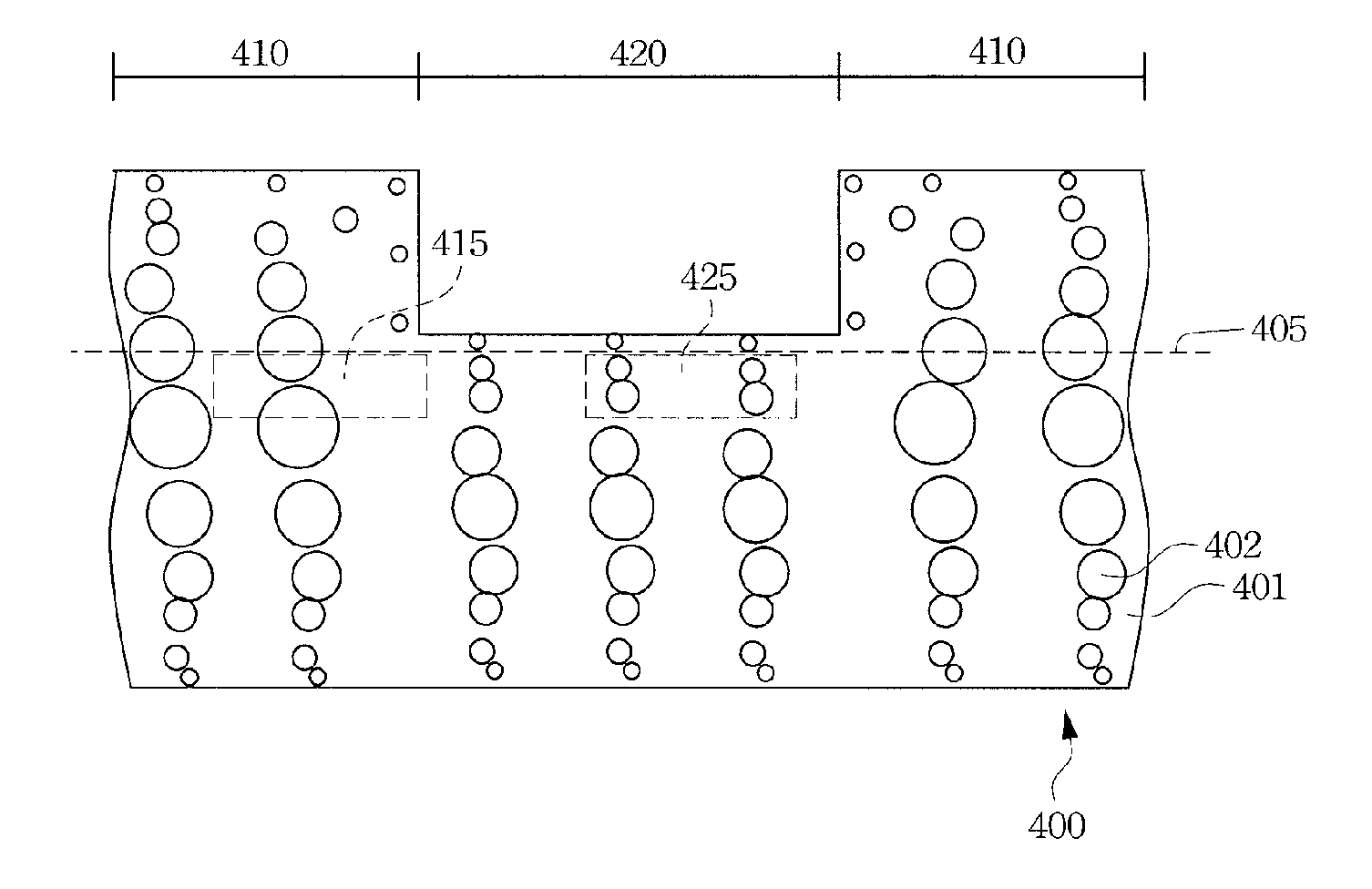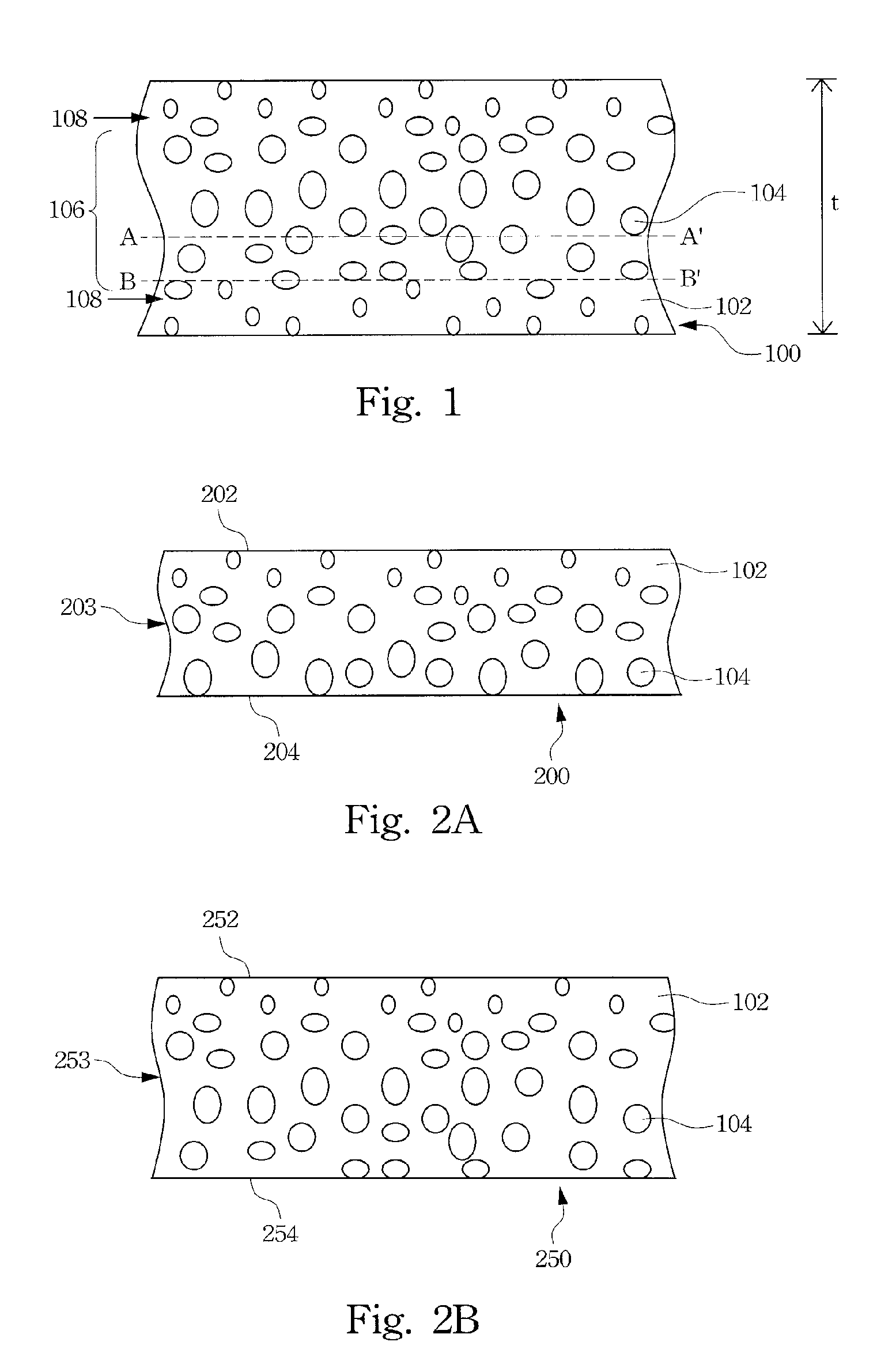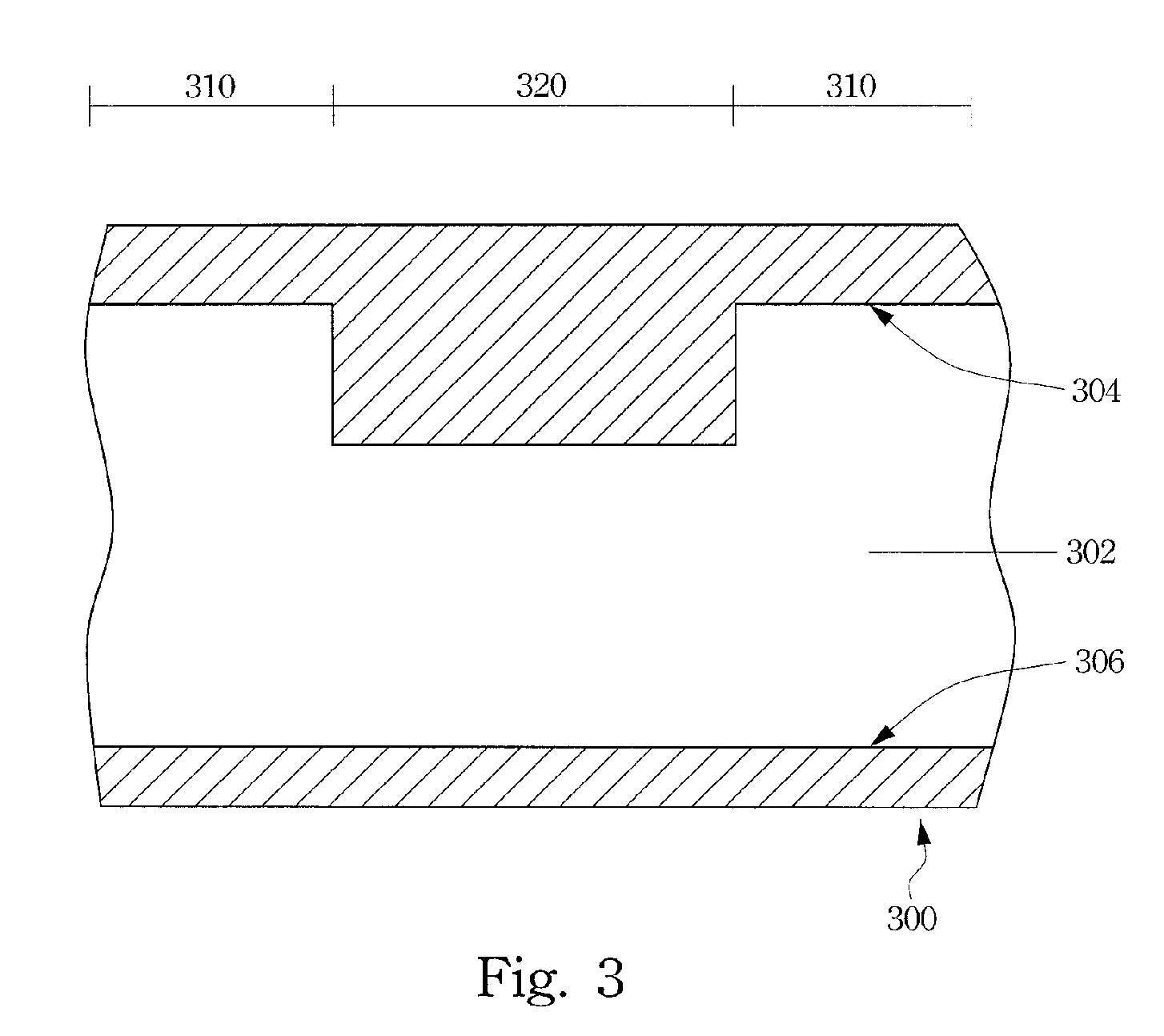Single-layer polishing pad and method producing the same
a single-layer, polishing pad technology, applied in the direction of flexible wheel, manufacturing tools, lapping machines, etc., can solve the problems of increasing the difficulty of pattern transfer from a photomask to a photoresist layer, the loss of the low throughput of the cmp process, etc., to achieve the effect of improving the polishing planarity and uniformity, reducing the cost and improving the polishing
- Summary
- Abstract
- Description
- Claims
- Application Information
AI Technical Summary
Benefits of technology
Problems solved by technology
Method used
Image
Examples
embodiment 1
[0034]According to a preferred embodiment, a polishing pad is formed by the foam process described above. Reference is made to FIG. 1; the polymer 102 of the foamed polymer 100 is preferably polyurethane, epoxy resin, phenol formaldehyde resin, melamine resin or other suitable thermosetting resins. The foamed polymer 100 can be made by any suitable foam process, such as injection molding. The material of the polymer 102 and the porosity of the foamed polymer 100 can affect the rigidity of the foamed polymer 100. Since any one skilled in the art can adjust the relevant factors affecting the rigidity of the foamed polymer 100, a detailed discussion of the same is omitted here.
[0035]The ratio of the porosity of the interior region 106 (Pi) over the porosity of the surface region (Ps), i.e. Pi / Ps, is preferably larger than 1.3, and more preferably greater than 1.5. The thickness of the foamed polymer 100 is preferably about 2 mm to about 8 mm.
[0036]Therefore, a suitable cutting position...
embodiment 2
[0040]According to another embodiment, a mold, as shown in FIG. 3, can be used to produce a desired polishing pad by a foam process. FIG. 3 is a cross-sectional diagram showing a mold according to a second preferred embodiment of this invention. In FIG. 3, the mold 300 has a cavity 302, the interior bottom surface 306 is planar, and the interior top surface 304 is non-planar. Hence, the cavity 302 can be divided into at least two regions having different spacing. That is, a region 310 has a larger spacing and a region 320 has a smaller spacing.
[0041]For example, a polymer is injected into the mold cavity 302 of the mold 300 in an injection molding process with a foaming agent, a gas, or a combination thereof added. The polymer is foamed in the cavity 302 of the mold 300 to form a foamed polymer 400, as shown in FIG. 4. FIG. 4 is a cross-sectional diagram showing a foamed polymer formed by using the mold shown in FIG. 3. The polymer 401 of the foamed polymer 400 is preferably polyure...
PUM
| Property | Measurement | Unit |
|---|---|---|
| thickness | aaaaa | aaaaa |
| porosity | aaaaa | aaaaa |
| porosity | aaaaa | aaaaa |
Abstract
Description
Claims
Application Information
 Login to View More
Login to View More - R&D
- Intellectual Property
- Life Sciences
- Materials
- Tech Scout
- Unparalleled Data Quality
- Higher Quality Content
- 60% Fewer Hallucinations
Browse by: Latest US Patents, China's latest patents, Technical Efficacy Thesaurus, Application Domain, Technology Topic, Popular Technical Reports.
© 2025 PatSnap. All rights reserved.Legal|Privacy policy|Modern Slavery Act Transparency Statement|Sitemap|About US| Contact US: help@patsnap.com



